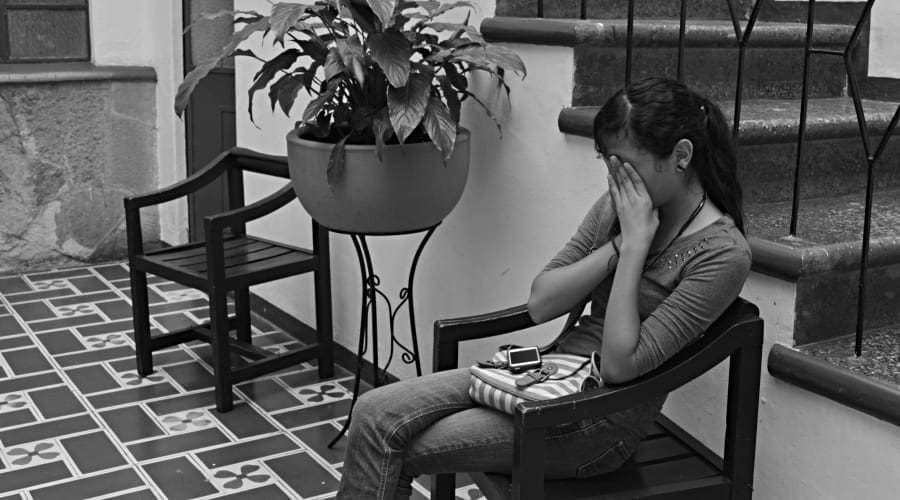“Child labor in the U.S.? That doesn’t happen here.”
“I don’t contribute to that.”
“I can’t do anything to stop it.”
These are common statements I hear because child labor trafficking isn’t discussed much in the United States.
Most of us think it happens in third-world countries, which it does, of course. But it also happens here in the United States, so we need to be aware of situations that don’t “feel right” and report them.
Those of us in positions of authority can make a difference by being sure that our businesses don’t inadvertently support child labor.
And all of us can become educated about the origin of products we buy and seek to buy products not made by exploited children.
Let’s be clear; as GoodWeave (an organization fighting child labor for 20 years) states, “Not all work performed by children is child labor. Household chores, contributing to a family business or having an afterschool job can be beneficial and necessary. However, any work that compromises a child’s health, personal development or schooling is considered child labor.”
Here are three actions you and your house of faith can take to help end child labor trafficking:
1. Be alert and report.
Here in my home state of North Carolina, there was a widely publicized case of child labor trafficking by a church.
In the Fayetteville, North Carolina, case, a pastor owned several businesses in which congregation members were required to work.
Children as young as 9 were forced to work at fish markets, where they cut up fish and carried large tubs of fish. They weren’t allowed to attend school, and if they complained, they were beaten.
I share this story for a couple of reasons.
One is that those of us who call ourselves Christians need to hold our brothers and sisters accountable when they use the cover of “church” to exploit people.
The other is that, Christian or not, we all have a responsibility to protect the vulnerable.
How many people in that community walked in those stores, saw children working in inappropriate circumstances, and on school days, and did nothing? How many people thought, “I should mind my own business?”
If you see a child (or an adult, for that matter) being mistreated, you have the power to stop it.
You shouldn’t put yourself or the victim in danger by intervening directly, but you should take mental notes of the appearance of the victim and the trafficker.
When you leave the business, get to a safe place and call local law enforcement and the National Human Trafficking Hotline (1-888-3737-888).
You have a responsibility to aid those in distress.
2. Vet your supply chain.
If you are a business owner or manager, is your business’ supply chain free of child labor?
Some industries are especially likely to engage in using child labor. The apparel manufacturing industry, the chocolate industry and the carpet industry are a few notable examples.
The California Transparency in Supply Chains Act requires that retail sellers or manufacturers with annual worldwide gross receipts in excess of $100 million provide consumers with information regarding their efforts to eradicate slavery and human trafficking from their supply chains.
This is a great first step, but much more needs to be done. A bill was introduced in 2015 in the U.S. House of Representatives to make this policy nationwide, but it continues to languish in committee.
Responsible businesspeople don’t wait for a law requiring action; they do the right thing because it’s the right thing. Ensure that your business doesn’t support child labor by buying from suppliers that use it.
3. Be a conscious consumer.
When you shop, do you look for the Fair Trade logo?
When you see the Fair Trade logo, you know that the employees involved in harvesting or producing the product were paid a fair, living wage. The logo also certifies that no child labor was involved.
Fair Trade-certified coffee, tea and sugar are available at most grocery stores. Some have Fair Trade cereal, breakfast pastries, ice cream, peppers, bananas and avocados.
If you start looking for the logo, you’ll realize it’s easier to find than you think. And if you can prevent child labor by eating Ben & Jerry’s ice cream, that’s a win for everyone.
The issue of child labor won’t be solved overnight, but if each of us does our part, we can make a difference.
As engaged community members, responsible businesspeople and conscious consumers, we can help ensure that children have a childhood, not a sentence of slavery.
Editor’s note: This article is part of a series for the U.N. World Day Against Child Labor (June 12). The previous article in the series is:
5 Ways You Can Make a Difference to Curb Child Exploitation by Nell Green
Founder of Eastern North Carolina Stop Human Trafficking Now. She is a member of Oakmont Baptist Church in Greenville, North Carolina.


